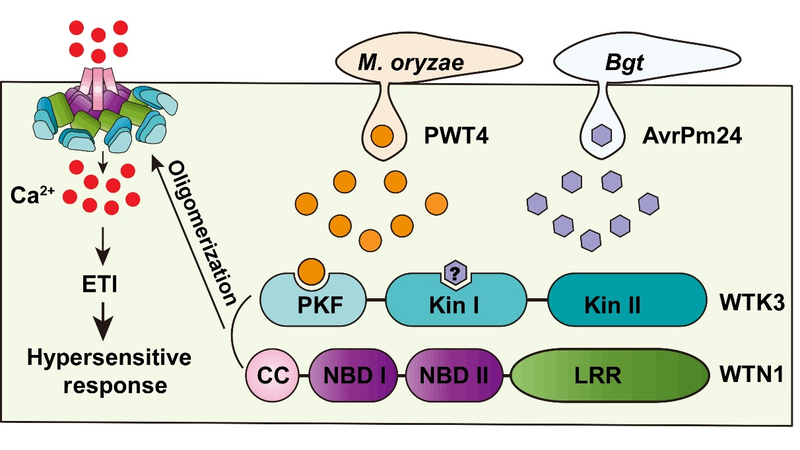Scientists from the Institute of Genetics and Developmental Biology, Chinese Academy of Sciences, together with colleagues from Nanjing Normal University, Yazhouwan National Laboratory, and Xianghu Laboratory, have unveiled a groundbreaking defense mechanism in wheat. This discovery highlights how an atypical NLR protein, WTN1, partners with the tandem kinase WTK3 to detect pathogen effectors and trigger immune responses against multiple fungal diseases.
The study, recently published in Science, details how the WTK3-WTN1 pair operates through a sensor-executor cooperative model to fend off pathogens such as powdery mildew and wheat blast. Prior work by the research group had already introduced resistance genes like Pm24 (WTK3) and Pm36 (WTK7-TM), but this new insight fills a crucial gap by revealing the molecular dialogue between tandem kinases and NLR proteins in crop immunity.
This breakthrough not only deepens our understanding of plant immune regulatory pathways but also lays a solid foundation for engineering crop varieties with broad-spectrum and multi-pathogen resistance. The implications for sustainable agriculture and resilient food supplies are significant, offering promising pathways for scientific innovation and global food security.
Reference(s):
Scientists uncover novel immune mechanism of wheat tandem kinase
cgtn.com




